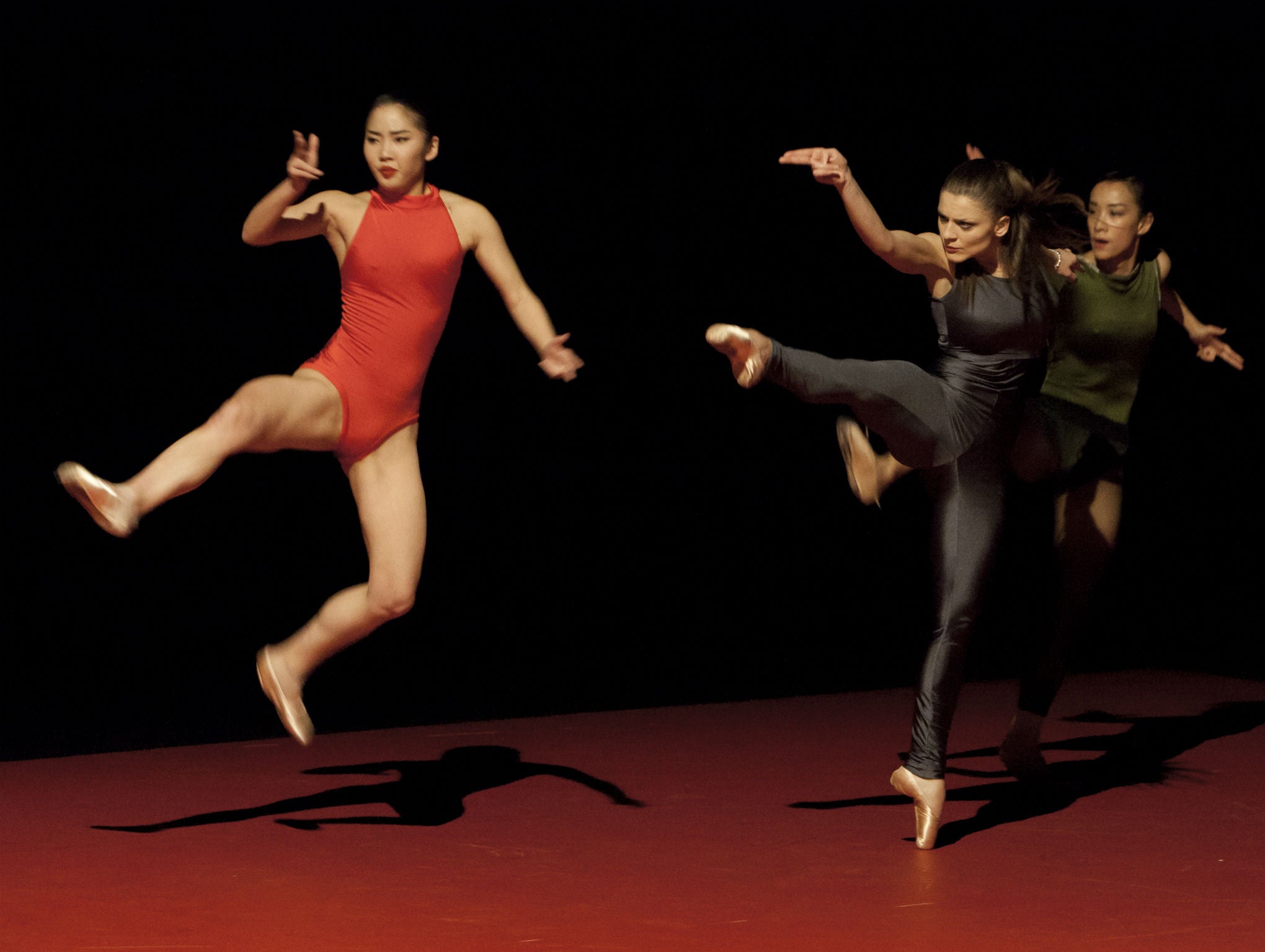DFS, Cecilia Bengolea and François Chaignaud, Sadler's Wells, London, review: Ballet meets Jamaican dancehall
Sound and movement rhythms are set against each other in a show that throws in medieval singing, a dancehall soundtrack, and clopping pointe shoes

Your support helps us to tell the story
From reproductive rights to climate change to Big Tech, The Independent is on the ground when the story is developing. Whether it's investigating the financials of Elon Musk's pro-Trump PAC or producing our latest documentary, 'The A Word', which shines a light on the American women fighting for reproductive rights, we know how important it is to parse out the facts from the messaging.
At such a critical moment in US history, we need reporters on the ground. Your donation allows us to keep sending journalists to speak to both sides of the story.
The Independent is trusted by Americans across the entire political spectrum. And unlike many other quality news outlets, we choose not to lock Americans out of our reporting and analysis with paywalls. We believe quality journalism should be available to everyone, paid for by those who can afford it.
Your support makes all the difference.Blending ballet, Jamaican dancehall and medieval polyphony, DFS is the kind of show where dancers sing complex harmonies while they change from pointe shoes into sneakers. Though the promised small dog did not join the cast this time, it’s a shaggy dog story of a performance, meandering from quirky to virtuoso.
Though both work as independent artists, Cecilia Bengolea and François Chaignaud are regular collaborators. In 2016, they were the first outside choreographers to create work for Tanztheater Wuppertal Pina Bausch. DFS, made for their own company, was developed with dancehall specialists, including Damion BG Dancerz, who has a starring role here.
The show starts in darkness, with layered voices. Though there’s also a dancehall soundtrack, the singing is performed live by the dancers. It sets intricate sound and movement rhythms against each other, while underlining the human, physical quality of singing. The vocals get less polished during high-speed moves, when breath is under pressure.
The three ballet dancers add their own percussive note, their shoes clopping as they move through dancehall steps. Bengolea and Chaignaud’s ballet choreography is much more limited; dancers (including Chaignaud) teeter on pointe as if stilt walking. It’s more fun to see ballet-trained dancers bringing their flexibility and speed to dancehall.
The strongest dancing comes from the dancehall specialists. Craig Black Eagle is taut and sharp, with a live-wire energy to each twist of his body. Damion moves with fluid looseness, the big steps bold and juicy. In an unexpected scene, he beckons half the stalls audience up on stage to learn a routine. He’s a marvellous teacher, getting a big cast moving with confidence and increasing speed.
Bengolea and Chaignaud themselves increase the random qualities of the show, wandering into the tighter dances performed by other people. Bengolea, who trained in urban dance forms before researching dancehall, throws in some acrobatic moves. Chaignaud, his long hair bundled up in a woolly hat, adds wriggly steps.
At just 50 minutes, DFS still straggles, with film clips and many shifts of tone. But the appeal is in the sense of experiment, of different kinds of physical expression, and in some big, expansive dancing.
Until 24 April (sadlerswells.com)
Join our commenting forum
Join thought-provoking conversations, follow other Independent readers and see their replies
Comments